Seeds of Diversity's Great Canadian Garlic Collection is a national project that explores and documents the many varieties of garlic grown in Canada.
There are well over 100 varieties of garlic that are suited to Canadian growing conditions. Our goal is to grow as many varieties as possible in all of Canada's major agricultural areas and to record their success and characteristics.
Garlic grows differently in different climates. Some varieties have particular colours, shapes or other characteristics in certain areas of the country, but not in others. For instance, some varieties grow scapes in the east but not in the west. Some have a purple or red colour when grown in certain climates, but are white elsewhere. More importantly, some varieties grow better than others in different regions.
We want to find out which kinds of garlic grow best in your area, and this is how you can help:
Every year, we harvest bulbils (the small bulbs that grow at the tops of the garlic stems) and offer them by mail order for a small shipping fee. Bulbils take two years to grow a full-size garlic plant, but they are much easier and less expensive to mail, and they don't contain insects of soil-borne diseases that can sometimes by transmitted with bulbs. We harvest many thousands of bulbils from our garlic, and offer them for sale to our members in August each year.
This has been an economical way for us to help diversify the varieties available to growers. There is no obligation to return garlic to us, but we hope growers will pass along their favourite varieties to others.
Garlic Bulbils Are Available to Order!
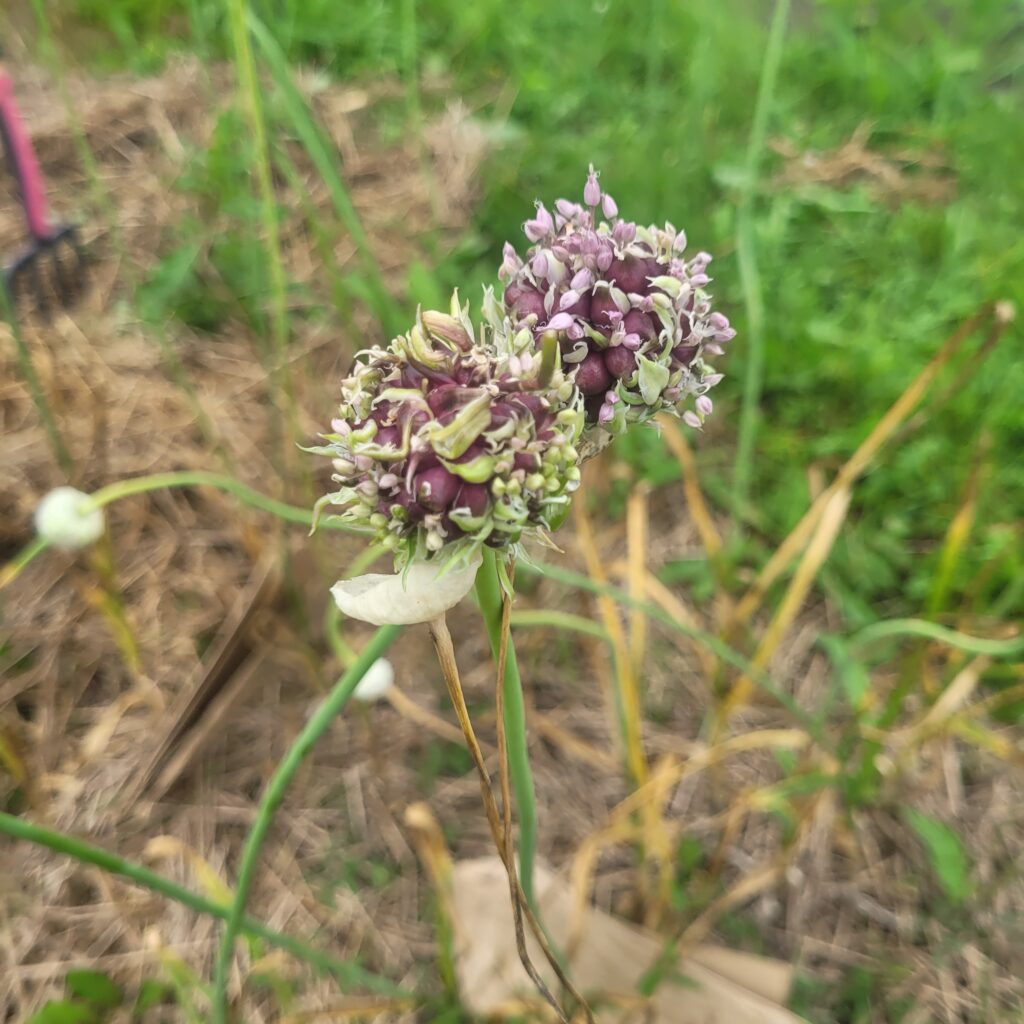

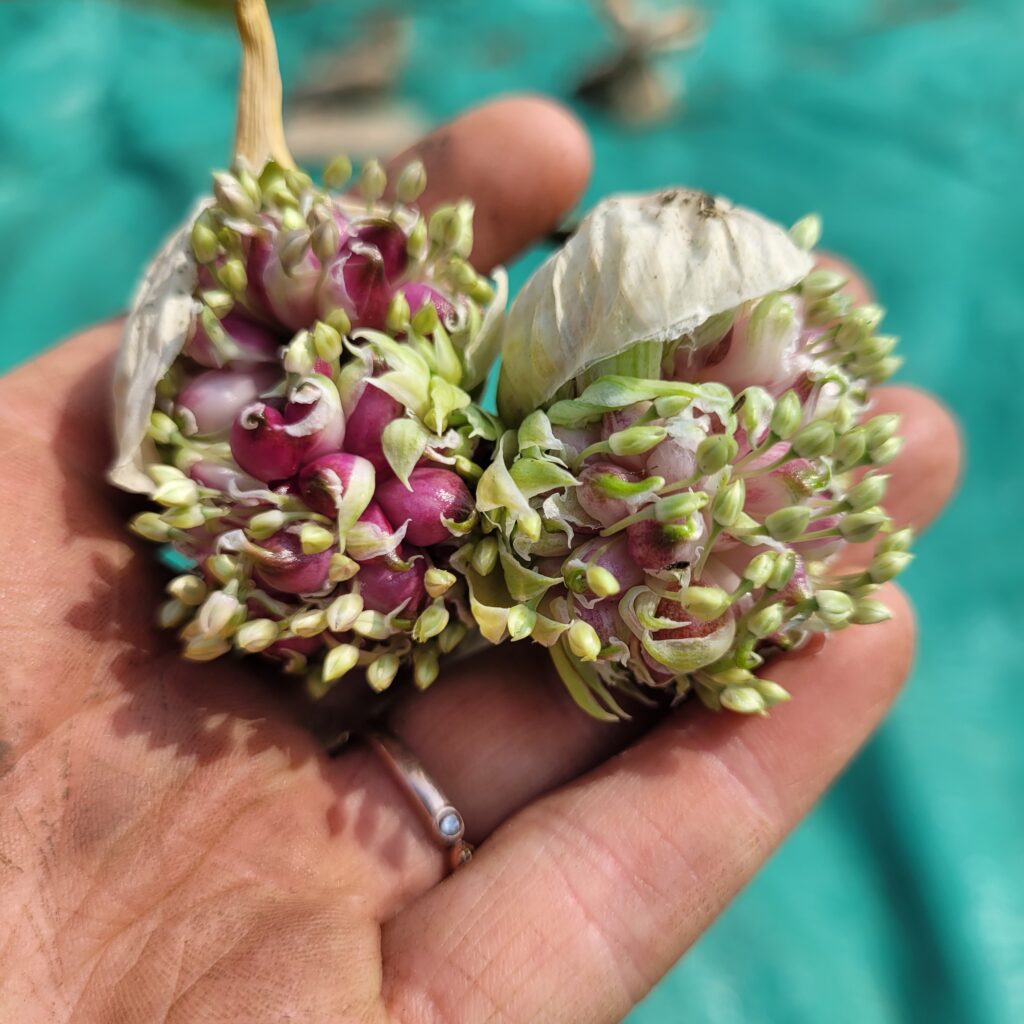
See in our Annual Member Seed Exchange the garlic varieties that members have re-offered as part of this program. You can list your garlic there too!
Not sure about bulbils quite yet? ==> How To Grow Garlic From Bulbils
A little bit about our garlic and garlic in general:
Garlic originated somewhere in mid-Asia, but no one knows exactly where because it has been grown and used for such a long time. It was well-known in ancient China and India, as well as by the Egyptians and Sumerians. All we know for certain is that there are hundreds if not thousands of strains that could be hundreds if not thousands of years old, all passed from gardener to gardener through all that time for food and medicine.
Our garlic varieties have names that reflect this ancient and wide-spread history: Acropolis Greek, Korean Purple, Russian Giant, and Persian Star; as well as some that sound more modern but are likely to be old varieties that are re-named: California Early Gaia's Joy, and Fish Lake 23.
For clonally propagated crops like garlic that aren't grown from seeds, there's no such thing as long-term storage. Garlic is planted in the fall, and must be overwintered through a process called vernalization before it begins to grow in the spring. Harsh weather can affect how many cloves make it through the winter, but a thick layer of mulch can help insulate and protect the garlic, though it cannot completely prevent damage to the cloves in very cold and long winters.
How We Grow Them
We maintain small samples of many varieties to ensure that they're preserved and available for growers to multiply. Every year, we've sent samples to other growers across the country to diversify the garlic that Canadians grow, and we've been lucky to be able to adopt some orphaned varieties from growers who downsized their own collections.
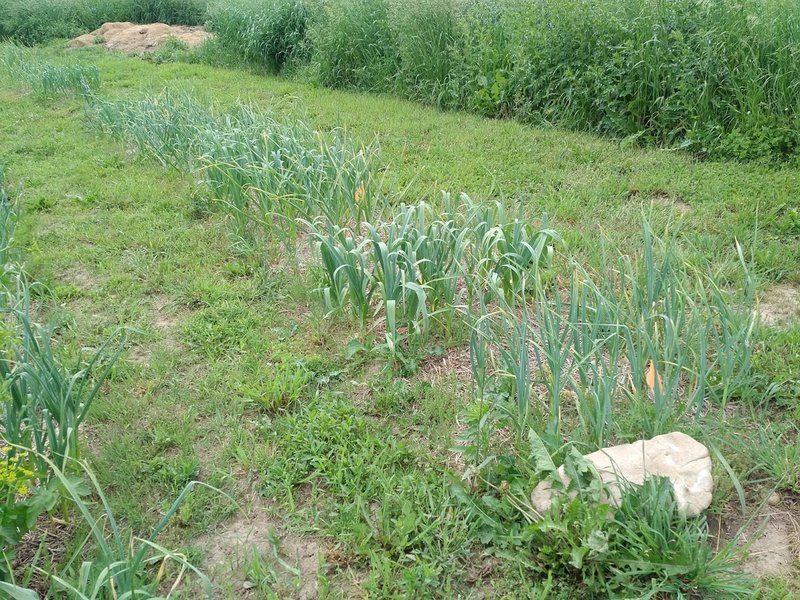
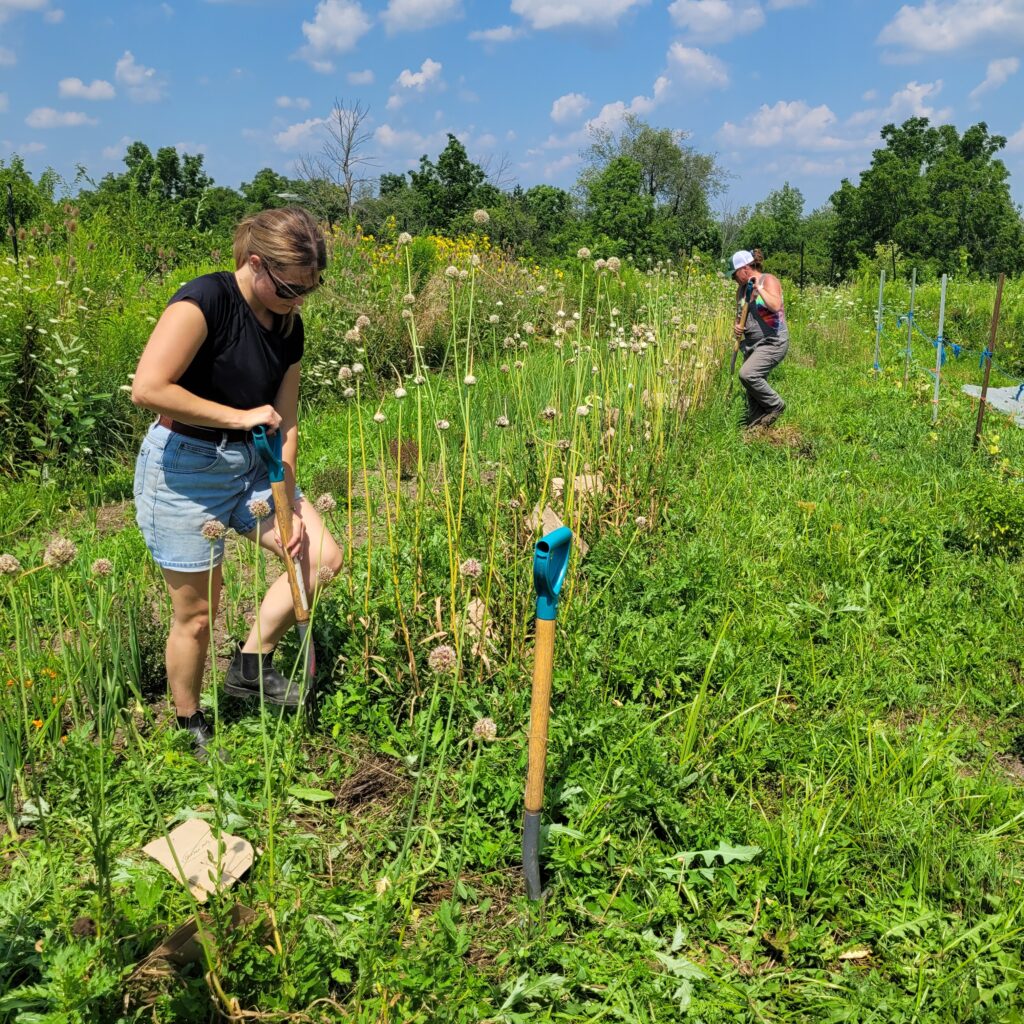
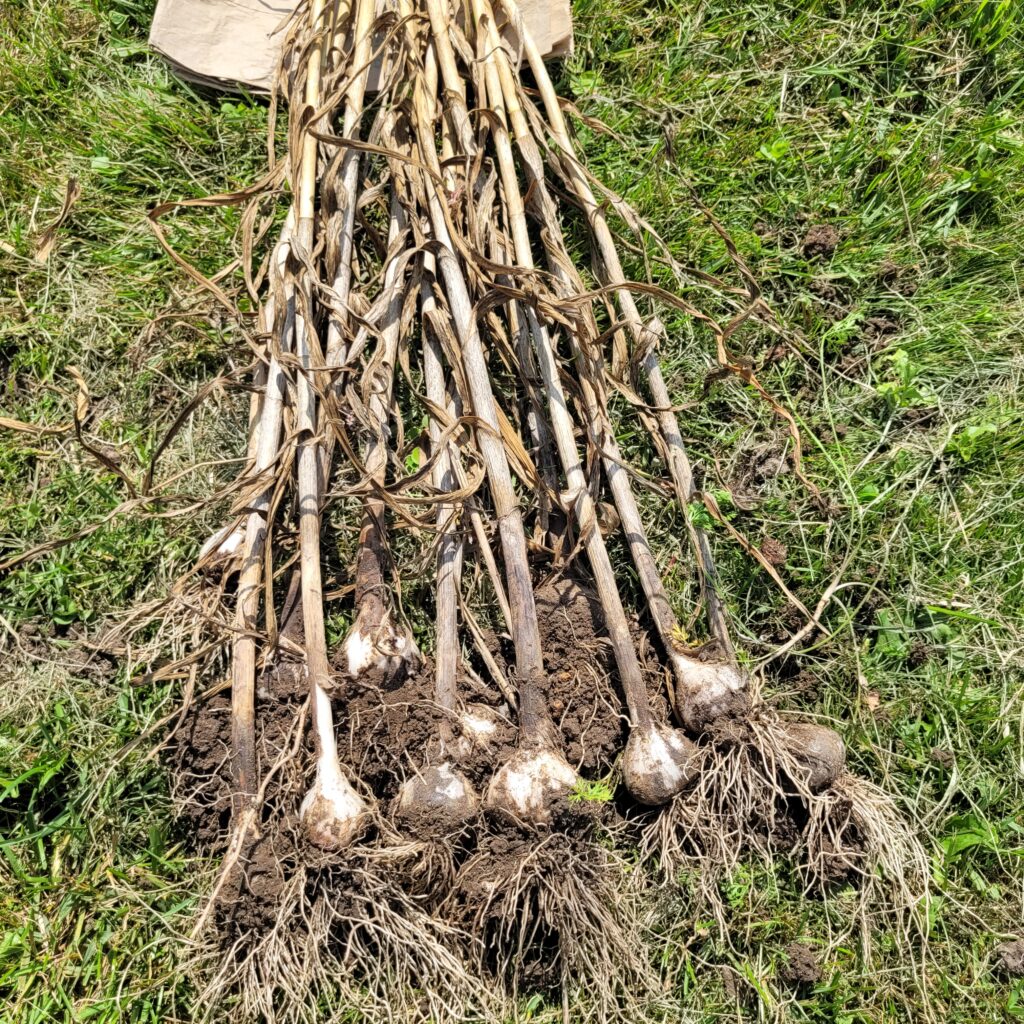
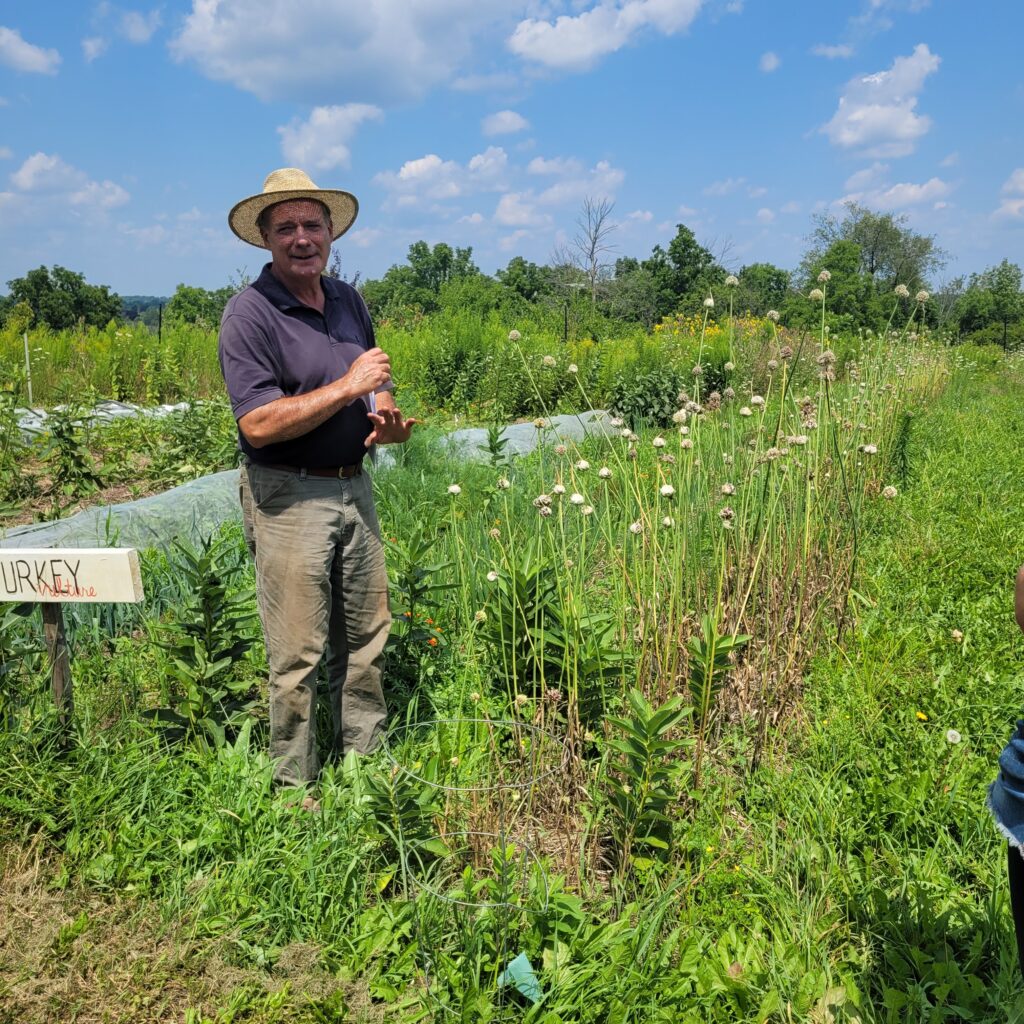

We grow about 12 plants of each variety each year. That means we split the bulbs in fall and plant 12 cloves of each variety. Some varieties have only four cloves in each bulb, and some have as many as 20, so with some varieties we have more leftovers than others. Our garlic is mulched with straw, which has several advantages: the straw helps prevent weeds, and it also keep the soil moist and cool which garlic likes best.
Normally, growers remove the "scape", of the flower stem, in mid to late June because the flower takes growth away from the bulb. Besides, the green scapes are delicious. We, however, normally let the scapes mature because they produce tiny bulbs (called bulbils) that can be planted to grow more garlic.
Take a look at our 2020 garlic scape experiment (results from 2021-2023 coming soon!)
